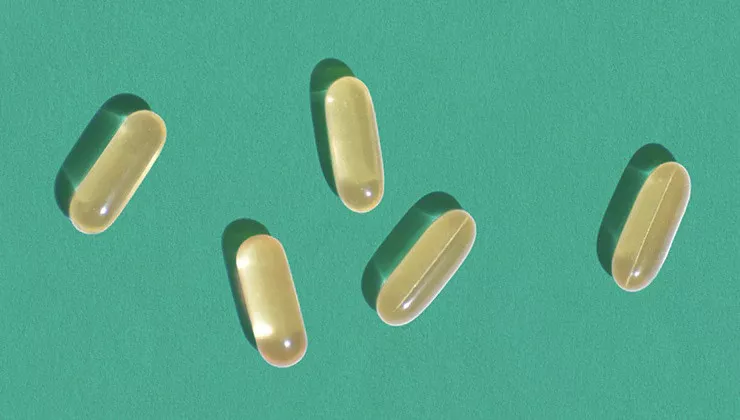Skin pigmentation is one of the most common and frustrating skincare concerns, affecting people of all ages, skin types, and ethnicities. It appears as patches of skin that are darker than your natural tone, often due to an overproduction of melanin—the pigment that gives your skin, hair, and eyes their color. While some pigmentation is harmless and temporary, others can be persistent, deep, and emotionally distressing. Understanding why pigmentation happens is the first step toward managing it effectively.
There are many reasons your skin might develop uneven color. Sun exposure is the most common culprit. When your skin is exposed to ultraviolet rays, it responds by producing more melanin as a defense mechanism. This often results in freckles, sunspots, or general discoloration. Hormonal changes—especially during pregnancy or from using birth control—can also trigger melasma, a stubborn form of pigmentation that commonly appears on the cheeks, forehead, and upper lip. Inflammation, acne scars, injuries, and even certain medications can leave behind dark marks known as post-inflammatory hyperpigmentation. Whatever the cause, pigmentation can make your skin look dull, uneven, and older than it is.
The Different Types of Pigmentation and How They Appear
Pigmentation isn’t one-size-fits-all. There are several types, each with its own cause and appearance. The most familiar is sun-induced pigmentation, also known as solar lentigines or age spots. These are flat, brown patches that often show up on areas frequently exposed to the sun—like your face, neck, shoulders, and hands. They tend to grow darker with time and become more noticeable as you age.
Melasma is another common form, often triggered by hormonal changes. It usually appears as symmetrical, brown-gray patches, most commonly on the face. Unlike age spots, melasma is more diffuse and stubborn, often requiring long-term treatment. Then there’s post-inflammatory hyperpigmentation (PIH), which occurs after the skin experiences trauma, such as acne, burns, or cuts. PIH shows up as dark spots that linger long after the original wound has healed. Each of these types has a different cause, and the treatment that works for one may not work for another.
How Sun Exposure Makes Pigmentation Worse
The sun might feel good on your skin, but it’s the number one enemy when it comes to pigmentation. Ultraviolet (UV) radiation triggers melanocytes—the cells that produce melanin—to become more active. This is why you tan after sun exposure. However, when these cells become overactive or damaged, they begin to produce melanin unevenly, resulting in dark patches.
Even a short time in the sun can undo weeks of progress in treating pigmentation. That’s why wearing sunscreen daily is absolutely non-negotiable. It should be broad-spectrum, with SPF 30 or higher, and applied even on cloudy days or when staying indoors near windows. Reapplying every two hours is also key, especially if you’re sweating or swimming. Hats, sunglasses, and seeking shade are all additional ways to prevent UV-induced darkening. Without sun protection, no pigmentation treatment will be truly effective.
How Hormones Affect Skin Pigmentation
Hormones play a powerful role in triggering and worsening pigmentation. Melasma, sometimes called the “mask of pregnancy,” is the most prominent example. It often occurs in women during pregnancy, when taking birth control pills, or during hormonal shifts like menopause. Estrogen and progesterone stimulate melanocytes, leading to the patchy discoloration typical of melasma.
Hormonal pigmentation doesn’t just fade on its own, and traditional brightening treatments may not always work. In fact, melasma can worsen with aggressive skincare routines or heat. That’s why gentle, long-term approaches are preferred. Stabilizing hormones, whether through medical advice or natural remedies like stress management, can also support clearer skin. It’s essential to understand that hormonal pigmentation is deeply rooted and requires patience and persistence to manage.
Post-Inflammatory Hyperpigmentation and Acne Scars
If you’ve ever popped a pimple or scratched a bug bite, you’ve likely seen the dark spot that follows. This is post-inflammatory hyperpigmentation (PIH), and it happens when the skin overreacts to trauma by producing excess melanin. It can affect any skin tone, but it tends to be more persistent and prominent in darker complexions.
PIH doesn’t cause texture changes—unlike true scars—but it can last for months or even years. Fortunately, PIH is one of the more responsive types of pigmentation when treated early. Gentle exfoliation, hydration, and brightening agents can significantly reduce its appearance. Avoid picking or squeezing blemishes, as this increases inflammation and raises the risk of pigment formation. Using spot treatments early in the healing phase can minimize long-term discoloration.
Best Ingredients for Treating Pigmentation
The skincare market is full of products that promise to fade dark spots, but only a few ingredients are backed by science. Vitamin C is one of the most popular and effective. It brightens the skin, inhibits melanin production, and provides antioxidant protection. When used regularly, it can help fade sunspots and even skin tone. Look for serums with stable forms of vitamin C like ascorbic acid for maximum benefit.
Niacinamide is another star ingredient. It reduces melanin transfer, calms inflammation, and strengthens the skin barrier. It’s also gentle enough for daily use and pairs well with other brighteners. Alpha arbutin, kojic acid, and licorice root extract are natural alternatives that suppress melanin activity without irritating the skin. For more stubborn pigmentation, ingredients like azelaic acid, tranexamic acid, and hydroquinone (under medical supervision) offer more potent effects.
Retinoids, including retinol and tretinoin, are also effective for pigmentation because they increase cell turnover. This helps slough off pigmented cells and encourages the growth of fresh, evenly toned skin. However, retinoids can be drying and increase sun sensitivity, so always pair them with sunscreen and hydrating products.
How to Build a Routine That Fades Pigmentation
Treating pigmentation takes time, and consistency is crucial. Start with a gentle cleanser that doesn’t strip the skin. Follow with a toner or essence that preps the skin for treatment. Apply a brightening serum with active ingredients like vitamin C or niacinamide. If using multiple actives, layer them from thinnest to thickest, and avoid mixing too many strong ingredients at once.
Hydration is essential. A good moisturizer helps maintain the skin barrier and supports the healing process. At night, consider introducing a retinoid or exfoliating acid like glycolic acid. These help fade pigmentation by speeding up skin renewal. However, use them cautiously to avoid irritation, which can worsen pigmentation.
Above all, never skip sunscreen. Use it every morning, rain or shine. Sunscreen isn’t just about prevention—it protects your progress. Without it, your skin will continue to produce melanin, undoing all your hard work.
When to Seek Professional Help
Sometimes, home remedies and over-the-counter products aren’t enough. If your pigmentation is severe, spreading, or resistant to topical treatments, it’s time to see a dermatologist. Professionals can assess the depth of pigmentation and recommend appropriate treatments like chemical peels, microdermabrasion, or laser therapy. These procedures work by removing the outer layers of skin or targeting melanin with focused energy, accelerating the fading process.
Prescription creams like hydroquinone, tretinoin, and corticosteroids may also be used for more aggressive treatment. However, these come with risks and should only be used under medical supervision. A dermatologist can also rule out underlying conditions, such as hormonal imbalances or autoimmune disorders, that may be contributing to your skin concerns. Seeking expert advice ensures you don’t waste time or money on ineffective solutions.
Natural Remedies for Mild Pigmentation
While natural remedies aren’t as fast or strong as clinical treatments, they can be helpful for mild pigmentation or maintenance. Aloe vera, for example, contains aloin, a compound that may help fade dark spots over time. Licorice extract is another gentle option with melanin-inhibiting properties. Green tea, turmeric, and vitamin E are often used in DIY treatments, though their effects vary.
Always do a patch test before applying any natural remedy to your face. Just because something is natural doesn’t mean it’s safe or suitable for your skin. Avoid harsh ingredients like lemon juice, which can irritate the skin and make pigmentation worse. Nature has its benefits, but don’t rely solely on home remedies if you’re dealing with stubborn or deep discoloration.
Lifestyle Habits That Can Help Reduce Pigmentation
Skincare products are powerful tools, but your daily habits also play a big role in pigmentation. A balanced diet rich in antioxidants helps fight the oxidative stress that triggers melanin production. Drink plenty of water, eat fruits and vegetables, and avoid processed foods that cause inflammation.
Sleep is another underrated factor. Your skin regenerates while you sleep, and poor rest can slow down healing and worsen pigmentation. Stress management is equally important, especially for hormonal pigmentation. Practices like yoga, meditation, and breathing exercises help regulate hormone levels and improve skin health from the inside out.
Avoid smoking and limit alcohol, both of which damage the skin and hinder your pigmentation progress. And finally, stay consistent with your routine. Even the best products can’t help if used sporadically. Pigmentation fades slowly but steadily when you give your skin the time and care it needs.
Conclusion
Pigmentation may seem stubborn and discouraging, but with the right knowledge and approach, it can be managed. Whether it’s caused by the sun, hormones, or inflammation, there’s a path to clearer, more even-toned skin. The key lies in understanding your specific type of pigmentation, using targeted ingredients, and protecting your skin every single day.
There’s no overnight cure. Progress comes in weeks and months, not days. But with consistent care, smart choices, and a commitment to sun safety, your skin can recover its natural radiance. Let your skincare routine be a daily act of self-respect—not just for appearance, but for the health and resilience of your skin. Pigmentation might leave a mark, but it doesn’t have to be permanent.
Related Topics

































